- Unit13 Nov 2014
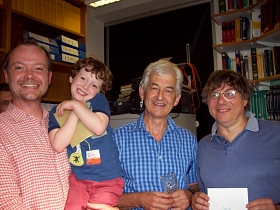 (from left to right) Professor Magill, Professor-to-be Johnny Magill, Unit Director Peter Somogyi, and Professor Capogna.
(from left to right) Professor Magill, Professor-to-be Johnny Magill, Unit Director Peter Somogyi, and Professor Capogna.All Unit members rejoice and congratulate Marco and Pete, the Unit Programme Leaders honoured in Oxford University’s Recognition of Distinction Awards for 2014:
Marco Capogna, Professor of Cellular Neuropharmacology
Peter J. Magill, Professor of Neurobiology
These titles are fitting recognitions of Marco and Pete's outstanding research performances over many years in the Unit’s research programmes, pursuing multidisciplinary systems neuroscience and tackling cellular mechanisms of network operations in behaviourally- and clinically-important brain systems such as the basal ganglia and the temporal lobe mnemonic network.
- Unit7 Nov 2014
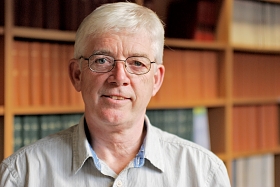
Monica Di Luca, President of the Federation of European Neuroscience Societies (FENS), recently announced the appointment of Professor J. Paul Bolam (University of Oxford) and Professor John Foxe (Albert Einstein College of Medicine, New York) as new Editors-in-Chief of the European Journal of Neuroscience (EJN), the official journal of FENS. Paul and John will be taking over from Jean-Marc Fritschy (University of Zurich) and Martin Sarter (University of Michigan), who have been at the helm for 6 years. The new Editors-in-Chief will formally take over on 1st January 2015.
The European Journal of Neuroscience was established in 1989 by the European Neuroscience Association. The first Editor-in-Chief was Professor Ray Guillery FRS, then Chair of the Department of Anatomy in Oxford, and now a Honorary Emeritus Research Fellow in the MRC Unit.
- Unit3 Nov 2014
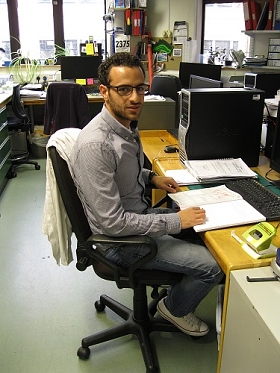
We are pleased to welcome Minas Salib to the Unit as a Visiting Student under the supervision of Prof Peter Somogyi and Dr Tim Viney.
He is currently completing a master’s degree in interdisciplinary neuroscience at the Goethe University of Frankfurt. He gained his Bachelor’s thesis in 2013 under the supervision of Dr Ingrid Ehrlich at the Centre for Integrative Neuroscience and Hertie Institute for Clinical Brain Research in Tübingen. During his time in the Somogyi lab he will undertake a Master’s thesis project entitled: “Firing patterns and postsynaptic cortical targets of medial septal neurons recorded and labelled in behaving mice”.
- Unit15 Sep 2014
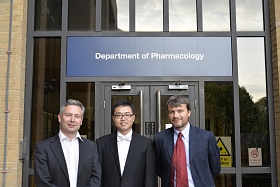 Dr Colin J. Akerman, Gengyu Li & Dr Alberto Bacci
Dr Colin J. Akerman, Gengyu Li & Dr Alberto BacciGengyu Li successfully defended his doctoral thesis, entitled "Firing of hippocampal neurogliaform cells induces suppression of synaptic inhibition" in his viva voce examination on 12th September 2014. Only minor corrections have been requested by the examiners.
Gengyu's examiners were Dr. Alberto Bacci, ICM Institut du Cerveau et de la Moelle Epiniere CNRS/INSERM Paris, and Dr. Colin J. Akerman, Dept. of Pharmacology, University of Oxford.
- Unit12 Sep 2014
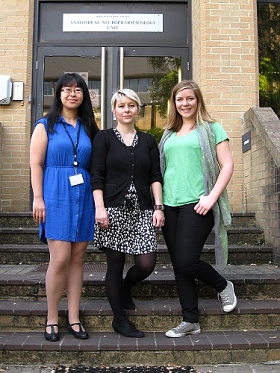 (from left to right) Hua, Jennifer and Natalie
(from left to right) Hua, Jennifer and NatalieWe are pleased to welcome Dr Hua Zhang, Dr Jennifer Kaufling, and Dr Natalie Doig to the Unit. Hua has joined us as a Research Technician, and Jenny and Natalie have joined the Unit as Postdoctoral Scientists. They will work in the group of Peter Magill, and their research shares the broad aim of defining the neuronal substrates of a functional dichotomy in the external globus pallidus of the dopamine-intact brain.
- Unit9 Sep 2014
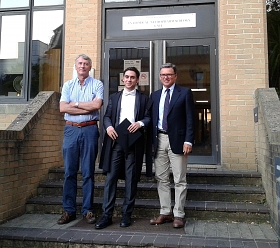
Michael Crump successfully defended his doctoral thesis, entitled "Diverse firing patterns of neurons of the medial septum and their hippocampal targets", in his viva voce examination on 9th September 2014. Only minor corrections have been requested by the examiners.
Michael's examiners were Prof. Francesco Ferraguti, Institute of Pharmacology, University of Innsbruck, and Prof. Trevor Sharp, Professor of Neuroscience, Dept. of Pharmacology, University of Oxford.
- Unit13 Aug 2014
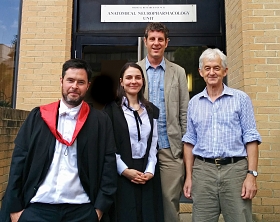 Simon Butt, Linda Katona, Ken Harris and Peter Somogyi
Simon Butt, Linda Katona, Ken Harris and Peter SomogyiLinda Katona successfully defended her doctoral thesis, entitled "The role of cell-type selective synaptic connections in rhythmic neuronal network activity in the hippocampus", in her viva voce examination on 13th August 2014. Only minor corrections have been requested by the examiners.
Her examiners were Prof. Kenneth Harris, Professor of Quantative Neuroscience, Institute of Neurology, UCL and Dr. Simon Butt, Associate Professor in Neuroscience, Dept. of Physiology, Anatomy & Genetics, University of Oxford.
- Unit31 Jul 2014
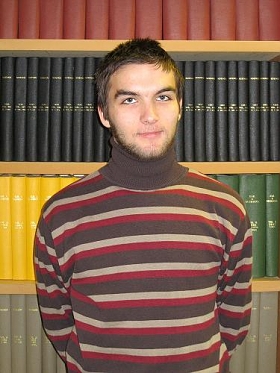
We are delighted to welcome back István Lukács, a visiting medical student from the Medical University of Targu Mures, Romania where he finished his 4th year, to Prof. Peter Somogyi's laboratory for a 2 month visit. István was a previous winner of the Oxford Cajal Scholarship scheme. He joins a project on the synaptic connections of identified neurons in acute human cortical slices recorded in vitro by the group of Prof Gabor Tamas, a previous Unit member now in the University of Szeged, Hungary.
- Unit31 Jul 2014
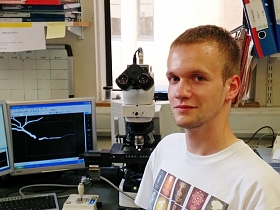
Peter Saghy has joined Peter Somogyi’s lab for a month long visit as part of the Oxford Cajal Scholarship scheme. He won the Ramon y Cajal competition with his essay, "Does evolution have a direction and what is the meaning of life?".
Peter completed his third year of high school at the Hungarian Gimnázium of Dunaszerdahely, the Slovak Republic.
- External24 Jul 2014
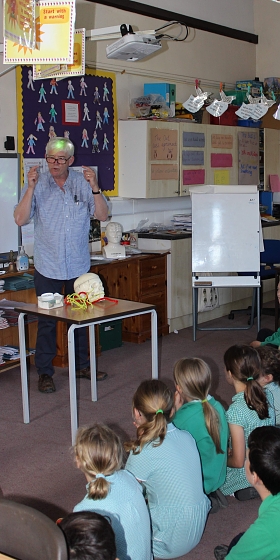
As part of the Unit’s highly successful and long-running Public Engagement Programme, Unit Senior Scientist Paul Bolam and student Federica Vinciati visited Little Milton Primary School to deliver a Neuroscience Session for about 30 pupils aged 8-10.
Paul Bolam led the group discussion using PowerPoint slides, a plastic brain, fixed animal brains and various other props. The general points raised were: who we are and what we do as part of the MRC; what the brain is; how many cells the brain contains; electrical signals in brain cells and networks; localization of function; and diseases of the brain with a focus on those of the aged, i.e. Parkinson’s disease and Alzheimer’s.
The presentation also included video clips of an untreated and medicated person with Parkinson’s, as well as the therapeutic effects of deep brain stimulation of the subthalamic nucleus in Parkinson’s.
Practical activities included: Mexican wave signal transmission through a network from ‘sensory organs’ to ‘muscles’, how it feels to have Parkinson’s, handling animal brains, and making pipe-cleaner neurons and networks.Innumerable questions from the children left Paul and Federica totally exhausted!!